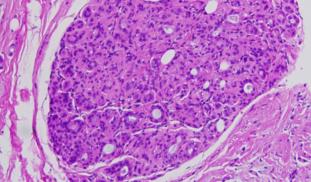Please wait...
About This Project
Breast cancer is the second most common cause of cancer death among women, and requires careful histologic study for diagnosis. I am studying the feasibility of recognizing breast cancer cells in histologic specimen by means of artificial intelligence. We will train convolutional neural networks to recognize tumour cells in small snippets of large images. If positive, the region in the image corresponding to the snippet is marked. Our preliminary results are promising (see also lab notes)!






